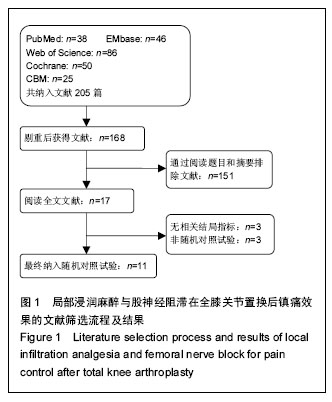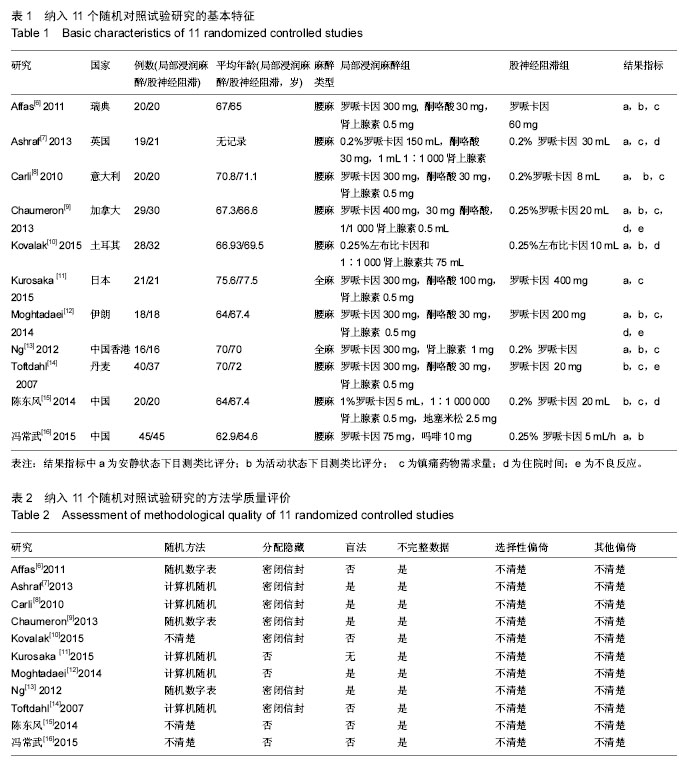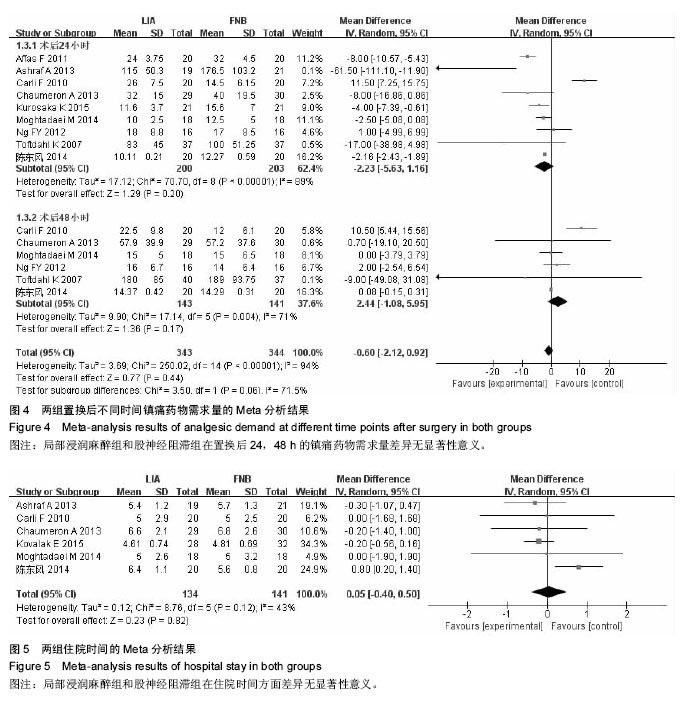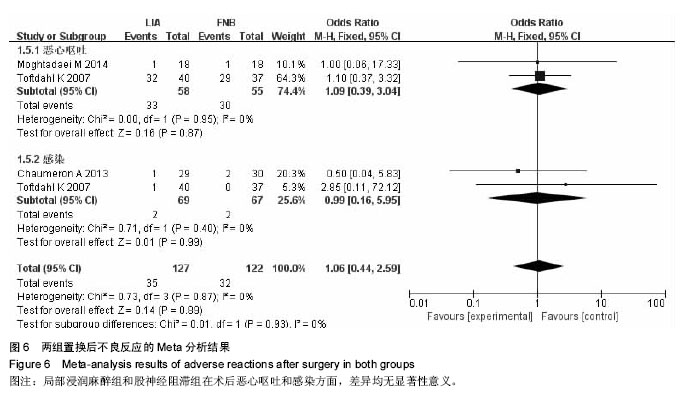| [1] 苏杭, 杨春喜, 岳家吉. 全膝关节置换术围手术期的镇痛方法[J]. 中华关节外科杂志(电子版),2015, 9(3): 416-419.
[2] Berend ME, Berend KR, Lombardi AV Jr. Advances in pain management: game changers in knee arthroplasty. Bone Joint J. 2014;96-B(11 Supple A): 7-9.
[3] Chan EY, Fransen M, Parker DA, et al.Femoral nerve blocks for acute postoperative pain after knee replacement surgery. Cochrane Database Syst Rev. 2014;5:CD009941.
[4] Kerr DR, Kohan L. Local infiltration analgesia: a technique for the control of acute postoperative pain following knee and hip surgery: a case study of 325 patients. Acta Orthop. 2008;79(2):174-183.
[5] Higgins JP, Green S. Cochrane Handbook for Systematic Reviews of Interventions (Version 5.1.0). Available at: http://www.cochranehandbook.org.
[6] Affas F, Nygards EB, Stiller CO, et al. Pain control after total knee arthroplasty: a randomized trial comparing local infiltration anesthesia and continuous femoral block. Acta Orthop, 2011;82(3):441-447.
[7] Ashraf A, Raut VV, Canty SJ, et al. Pain control after primary total knee replacement. A prospective randomised controlled trial of local infiltration versus single shot femoral nerve block. Knee. 2013;20(5): 324-327.
[8] Carli F, Clemente A, Asenjo JF, et al. Analgesia and functional outcome after total knee arthroplasty: periarticular infiltration vs continuous femoral nerve block. Br J Anaesthesia.2010; 105(2):185-195.
[9] Chaumeron A, Audy D, Drolet P, et al. Periarticular injection in knee arthroplasty improves quadriceps function. Clin Orthop Relat Res. 2013;471(7): 2284-2295.
[10] Kovalak E, Dogan AT, Uzumcugil O, et al. A comparison of continuous femoral nerve block and periarticular local infiltration analgesia in the management of early period pain developing after total knee arthroplasty Acta Orthop Traumatol Turc. 2015; 49(3):260-266.
[11] Kurosaka K, Tsukada S, Seino D, et al. Local infiltration analgesia versus continuous femoral nerve block in pain relief following total knee arthroplasty: a randomized controlled trial. J Arthroplasty. 2015.
[12] Moghtadaei M, Farahini H, Faiz SH-R, et al. Pain Management for Total Knee Arthroplasty: Single-Injection Femoral Nerve Block versus Local Infiltration Analgesia. Iran Red Crescent Med J. 2014; 16(1):E13247.
[13] Ng FY, Ng JK, Chiu KY, et al. Multimodal Periarticular Injection Vs Continuous Femoral Nerve Block After Total Knee Arthroplasty A Prospective, Crossover, Randomized Clinical Trial. J Arthroplasty. 2012;27(6): 1234-1238.
[14] Toftdahl K, Nikolajsen L, Haraldsted V, et al. Comparison of peri- and intraarticular analgesia with femoral nerve block after total knee arthroplasty: a randomized clinical trial. Acta Orthopaedica. 2007; 78(2):172-179.
[15] 陈东风, 蒋建清. 股骨神经阻滞与局部浸润麻醉对全膝关节置换术后疼痛管理的疗效比较[J].中华全科医学, 2014, 12(11): 1867-1868.
[16] 冯常武, 卢杰, 丁一, 等. 连续股神经阻滞对全膝关节置换术的镇痛及恢复效果[J]. 现代生物医学进展, 2015, 15(25): 4905-4907.
[17] Busch CA, Shore BJ, Bhandari R, et al. Efficacy of periarticular multimodal drug injection in total knee arthroplasty. A randomized trial. J Bone Joint Surg Am. 2006;88(5):959-963.
[18] Jiang J, Teng Y, Fan Z, et al. The efficacy of periarticular multimodal drug injection for postoperative pain management in total knee or hip arthroplasty. J Arthroplasty. 2013;28(10):1882-1887. |
.jpg)





.jpg)